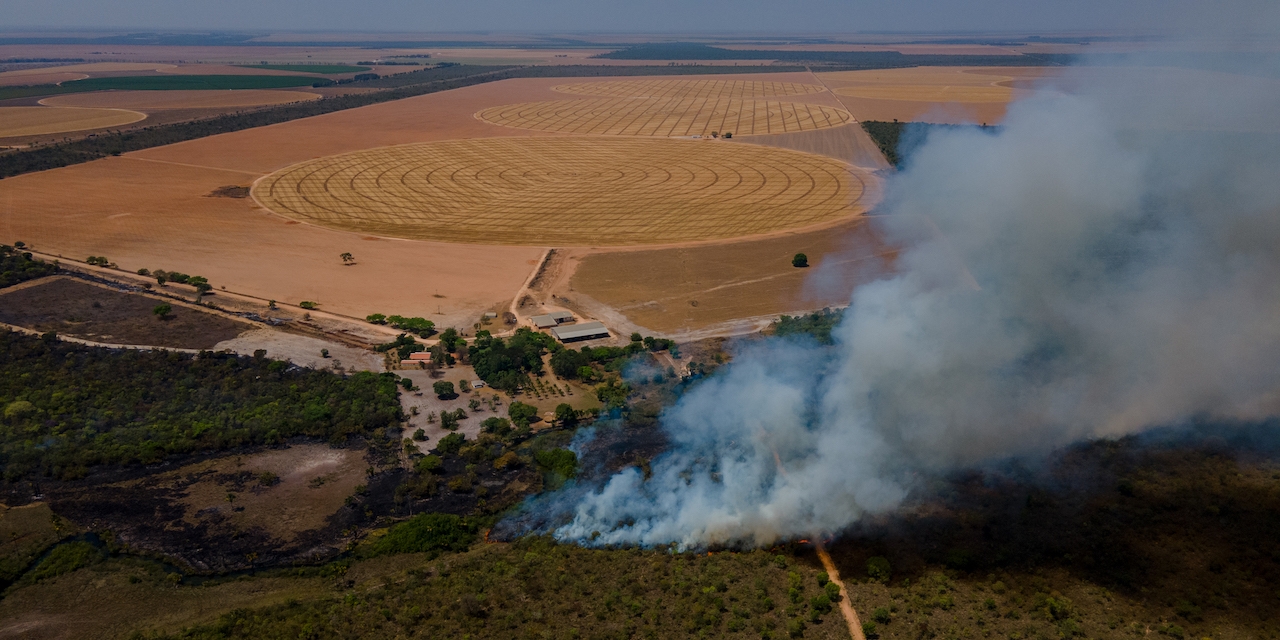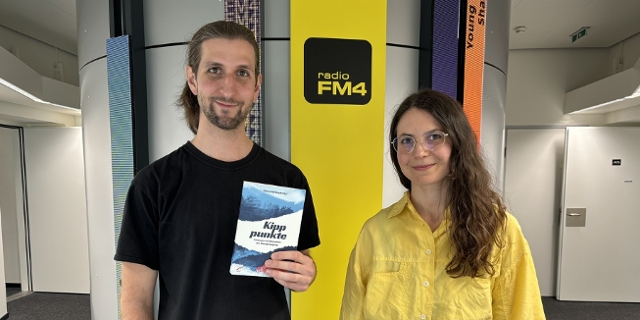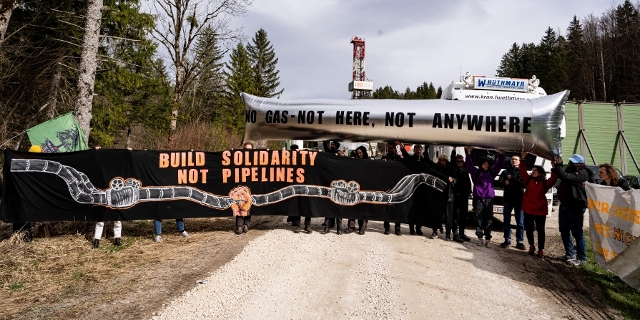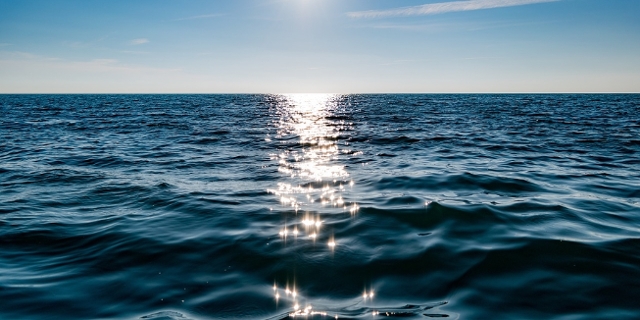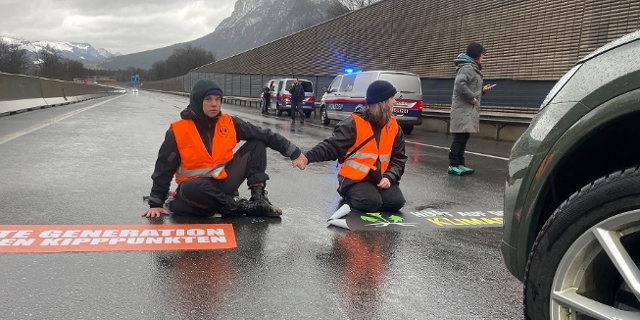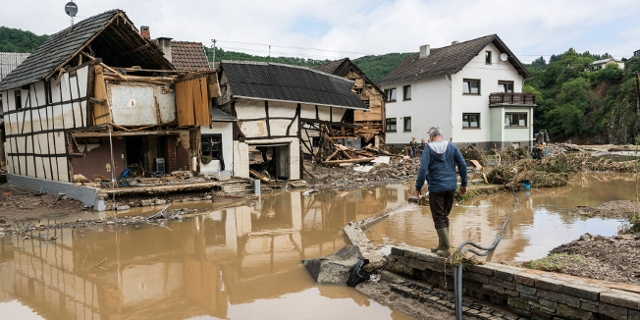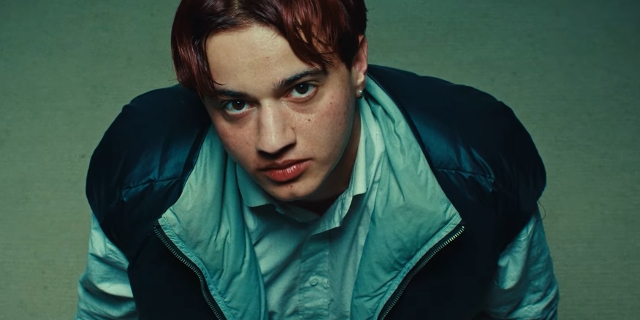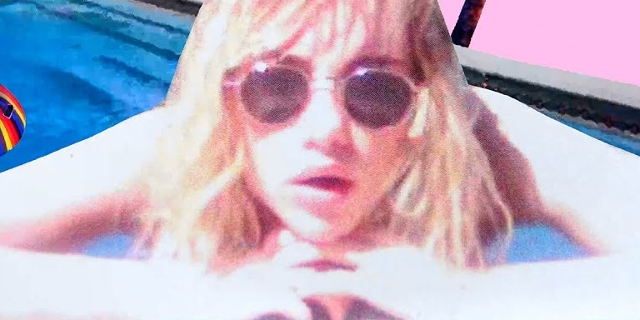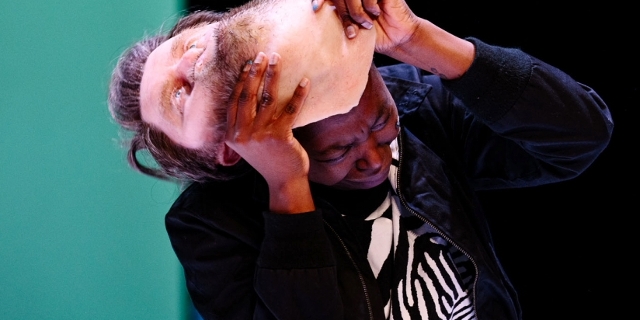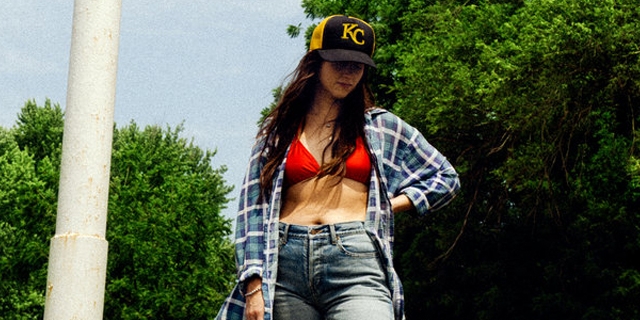Cerrado: Eden on Fire
“For me the Cerrado is life,” says Brazilian rural producer Maria Luzinete Alves Santos. “It is joy and it is health.” Maria is standing under the jackfruit tree that grows outside her modest wooden house near the community of Alto São Bartolomeu, an hour’s drive from the capital Brasilia.
“This is where I get my livelihood from. So if we lose this, I lose everything.”
But this life-sustaining savanna area that cuts across Brazil diagonally like a ceremonial sash, is dying. It is being killed off at a dizzying pace; sacrificed for our global appetite for cheap, daily meat.
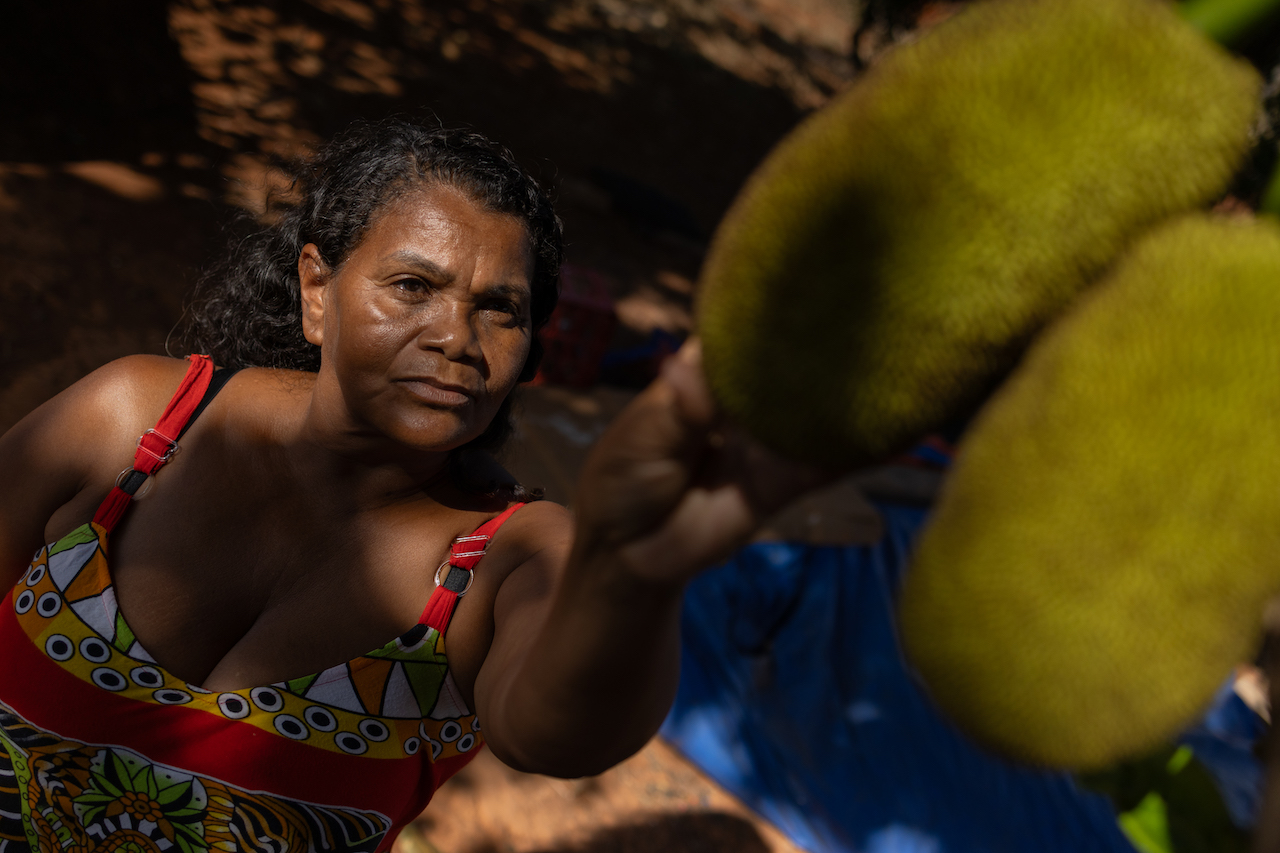
Myke Sena / WWF-Brasil
This is a tragedy for the hardy people who, for generations, have lived off its fruits, nuts and natural medicines. But ultimately, since the Cerrado stores a tremendous amount of carbon and houses great biodiversity, this mindless destruction of this unique biome is a tragedy for all of us.
The World’s Fastest Disappearing Ecosystem
A mixed savanna area that hosts 5% of the world’s species, the Cerrado is disappearing at a rate faster than any other major ecosystem in the world. Half of its natural vegetation has already been lost, and the Cerrado continues to lose one million hectares of forest per year every year.
One Million Hectares Lost Per Year
Agribusiness is advancing, nature is retreating and, outside of Brazil, people have hardly noticed.
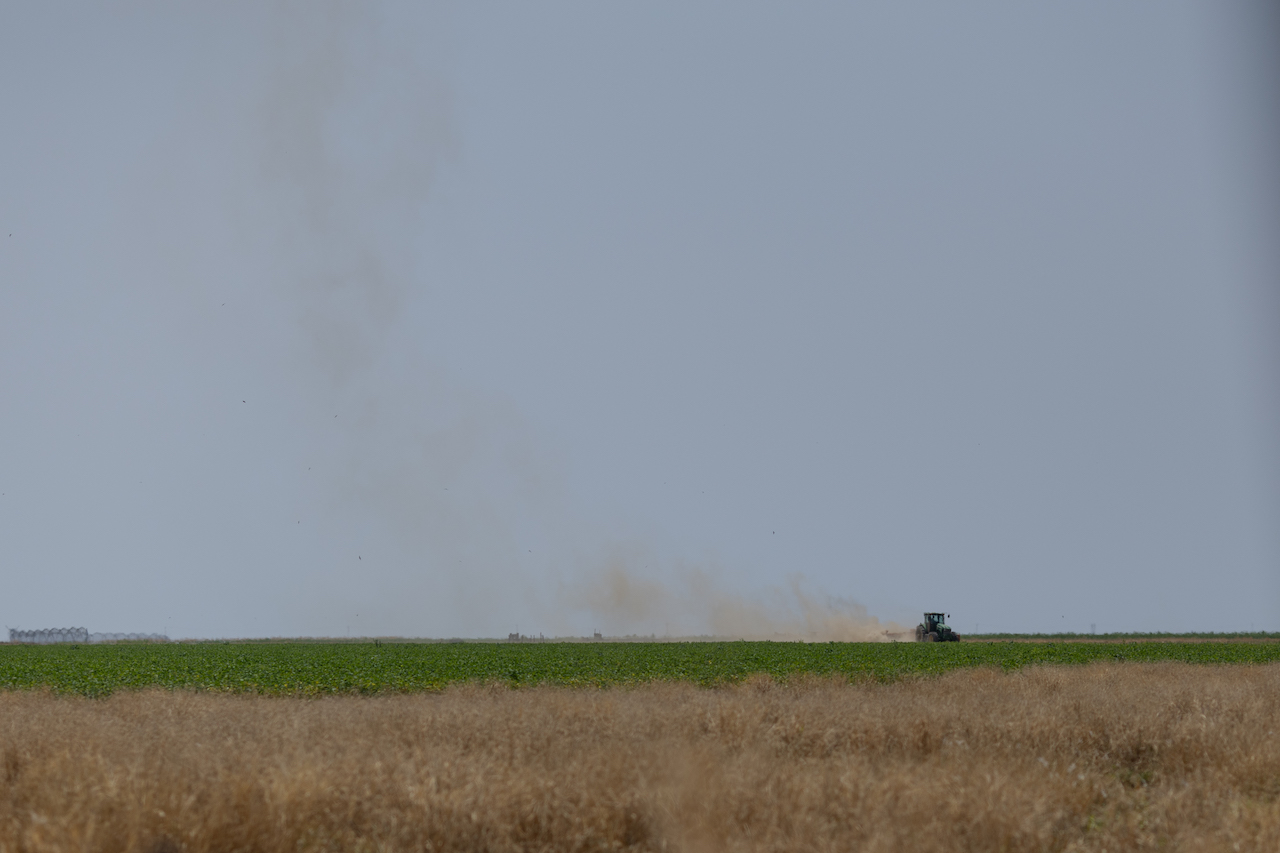
Myke Sena/WWF-Brasil
In western Bahia state in middle of Brazil, community leader and activist Miguel Souza Neto blows mournfully into his hands. He’s recreating the sound of birds he loves but are now threatened with extinction. He stands at the point where the savanna forest of the Cerrado ends and yet another cattle ranch begins.
„The Whole World Will Lose“
Miguel says the world ignores the destruction of this vital habit at its peril: “The whole world will lose, it the destruction continues,” he says. “And we who are born here have already lost 70% of our biodiversity.”
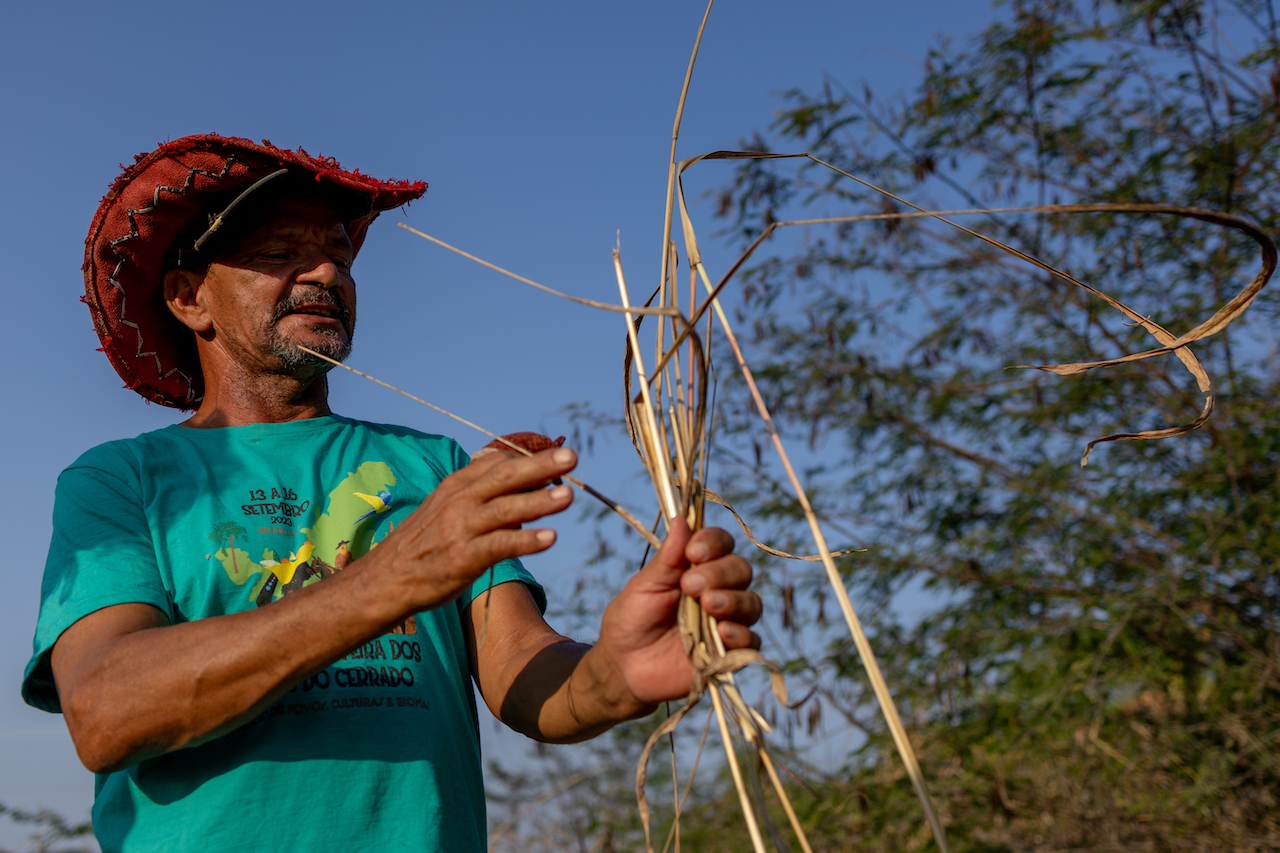
Myke Sena / WWF-Brasil
Miguel Souza Neto warns we are losing the precious biodiversity of his homeland
A Neglected Disaster
But this is a neglected ecological catastrophe; our eyes are elsewhere. In a background of intense international pressure, the new/old Brazilian President Luiz Inácio Lula da Silva is finally getting a grip on Amazonian deforestation and the rate of destruction is slowing. A 57% reduction has been recorded.
But please look beyond the jubilant headlines. At the same time, the destruction of the Cerrado has increased by 149%.
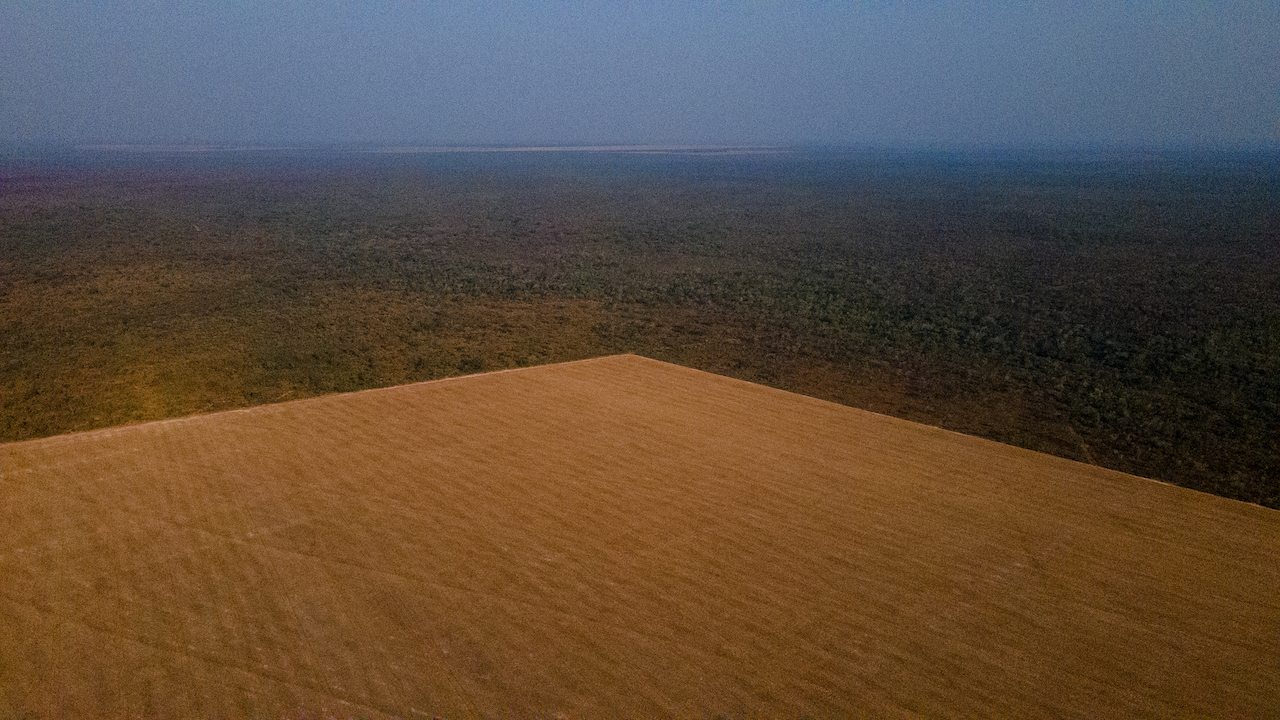
Myke Sena / WWF-Brasil
Deforestation in Brazil’s Cerrado savanna hit a seven-year high this year
Indeed 2023 has so far been a record year for land-clearances and Brazilian conservationist fear that authorities are turning a blind-eye to the destruction of the savanna as a sort of quid-pro-quo for the agribusiness barons who now face increased scrutiny in the rainforest.
A Suicidal Mistake
This would be a suicidal mistake, insists Ana Carolina Crisostomo of the WWF who is guiding me around the Cerrado. She thinks the new environment mister Marina Silva is engaged and aware, but is still too busy with the Amazonian destruction to give the protection of the Cerrado the attention and resources it needs.
A Symbiosis
Yet, you can’t separate the two biomes; the Amazon needs a healthy Cerrado to maintain its own health. The Amazon is already suffering a major drought which only emphasizes the importance of its sister biome - the great water cradle of Brazil.
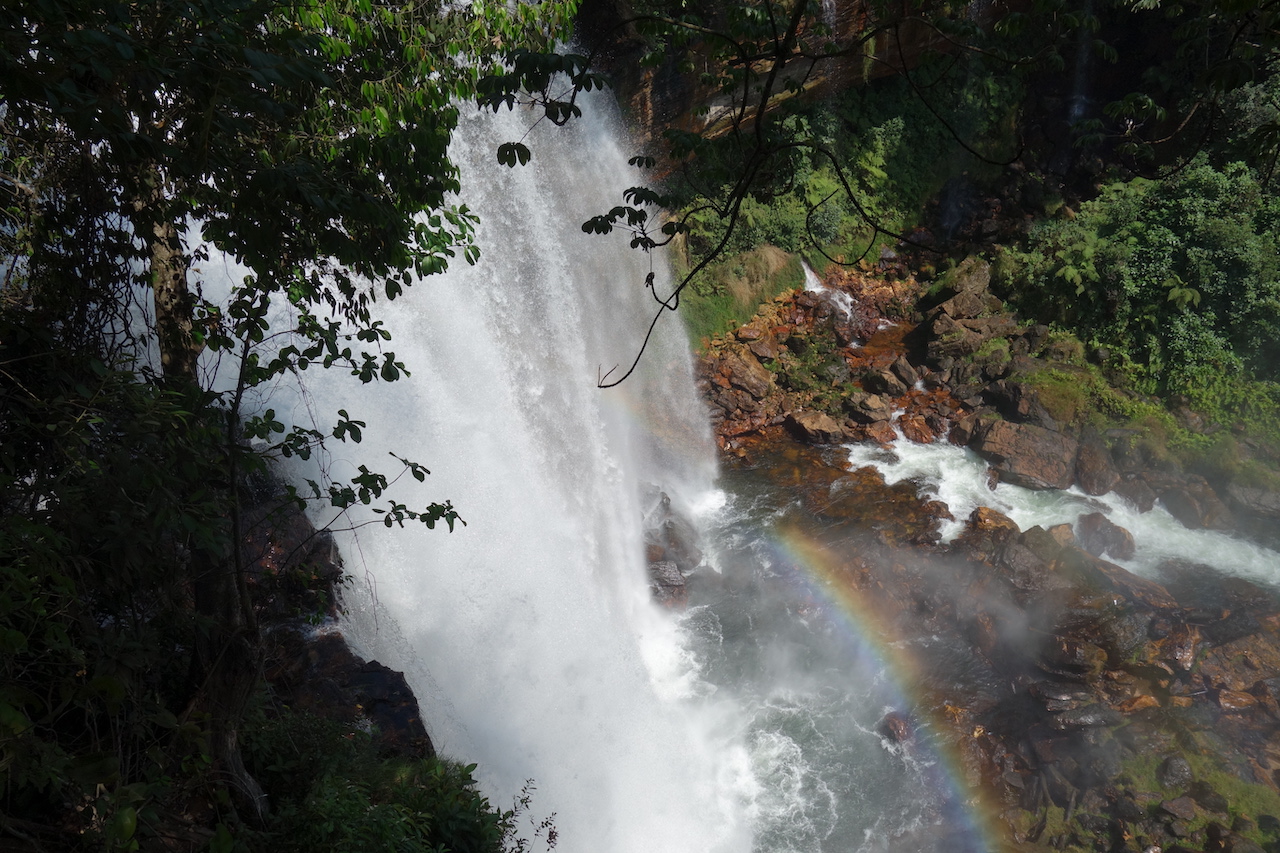
Chris Cummins
The Cerrado is Brazil’s water cradle
The Cerrado harbours the headwaters of most of the country’s major rivers and hydrographic basins. In all, it supplies 40% of the country’s freshwater supplies. But under the intense deforestation and conversion to agriculture, the system is breaking down.
The System is Breaking Down
The vegetation and deep soils have always acted as a sort of sponge. The ingenious natural system has for millennia absorbed and filtered rainwater in the wet season and then stored it in underground aquifers.
This means the water has been available in the dry season through the many springs that have sustained communities for centuries.
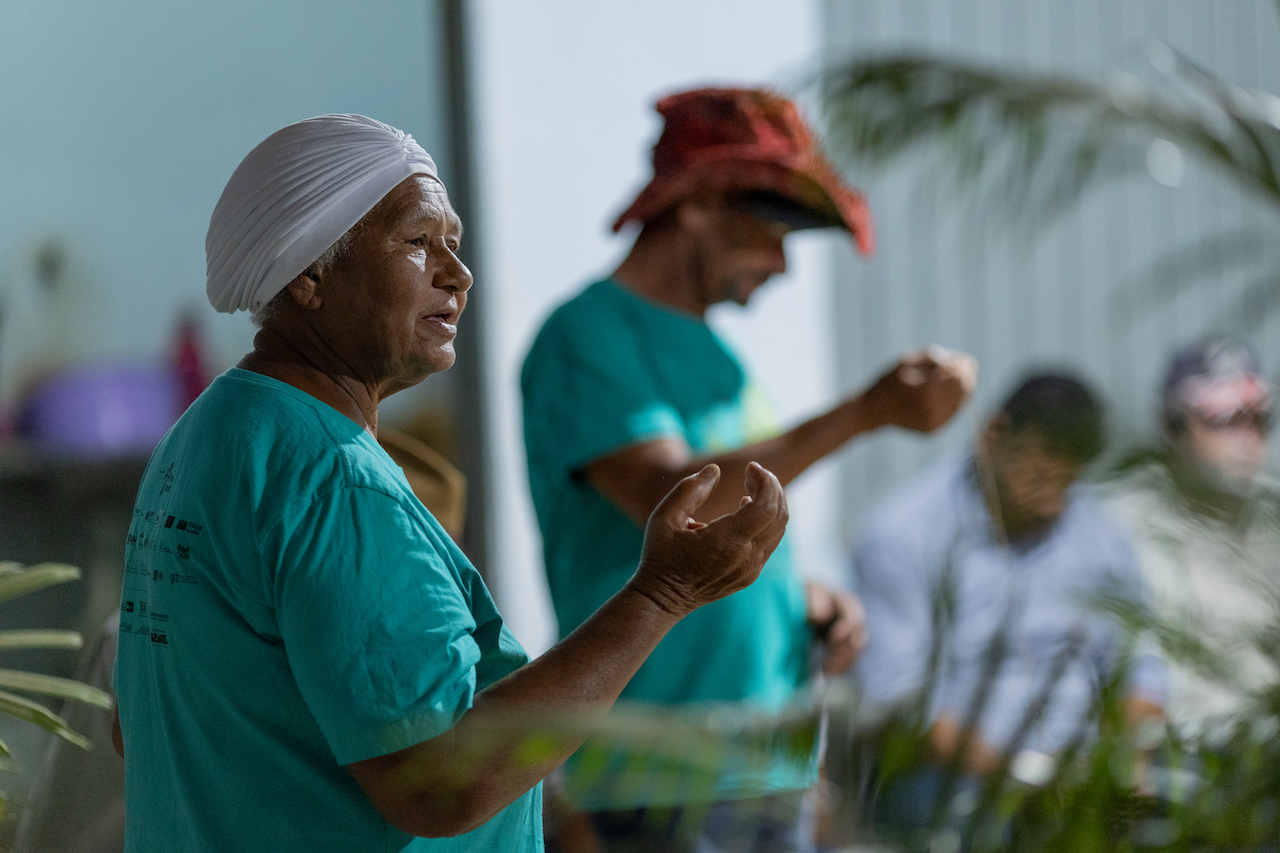
Myke Sena/ WWF-Brazil
Lindaura Rodrigues da Silva at a community in Sítio da Barriguda Community in Bahia state
But with the vegetation disappearing at a terrifying rate to make way for the soybean and cotton fields, the springs are drying up. At the end of a bumpy road in western Bahia, I visit the community of Sítio da Barriguda where the lack of water is putting threatening their way of life. “There used to be so many around here,” complains the mayor Giovanni Moreira dos Santos, “now there are none.”
Rivers Sucked Dry By Irrigation
Besides that, the local rivers are being sucked dry by the massive irrigation systems demanded by thirsty monocultures of soy and cotton, explains Anna Carolina Crisostomo of WWF Brazil. “They are drying up the rivers so the water is not available anymore for the small holders.”
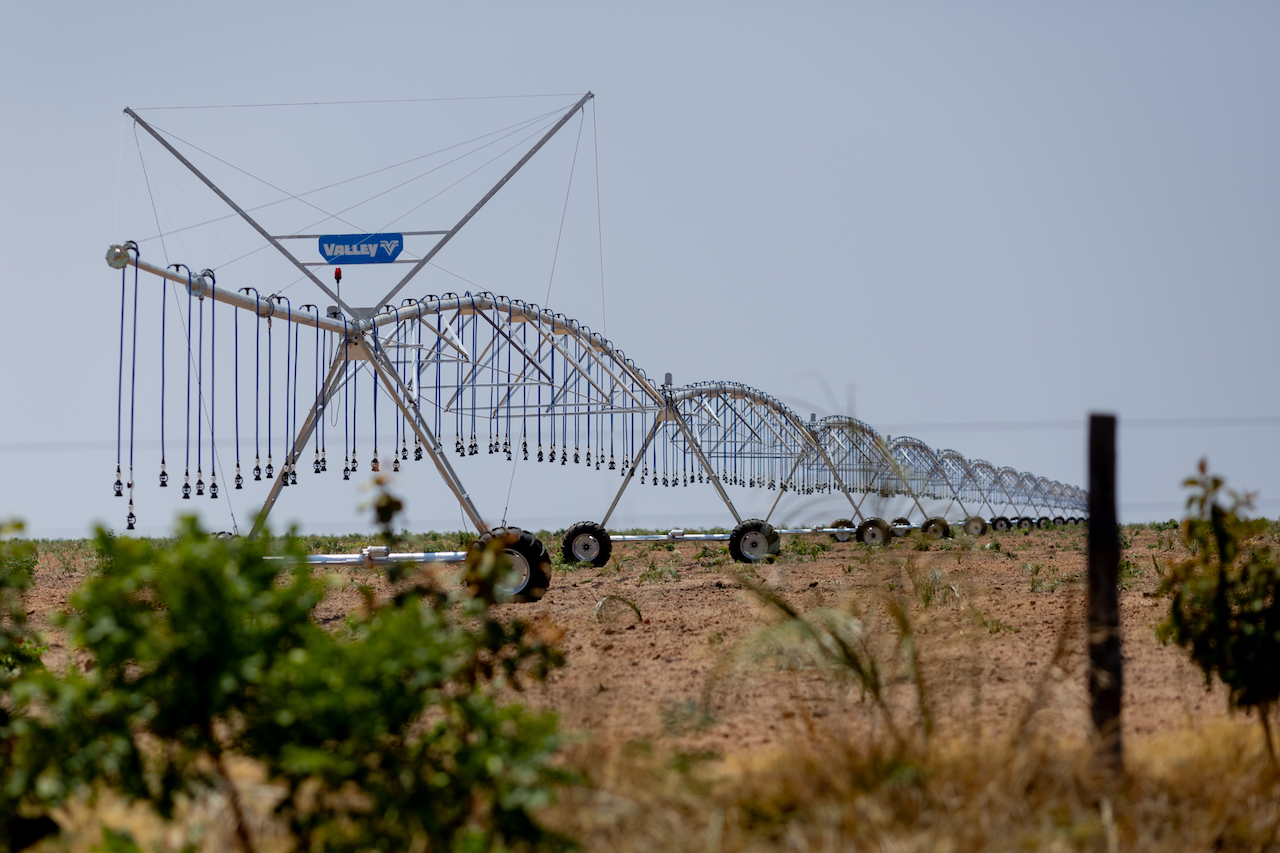
Myke Sena / WWF-Brasil
Precarious Landrights
Worse, land-rights are precarious for the communities who have lived off the land for generations. They have tradition but they don’t have the paperwork. “Many times the local people are prohibited to get to the river because the big landowners don’t not allow them to reach the river to get water,” complains Anna Carolina. “They say they have purchased the land on the banks of the river.”
In Galho D’água Community in Bahia’s municipality of São Desidério, local small-holder Nascimento Vieira de Barros describes being sent away from the nearby Rio Grande by men with guns. The Rio Grande is a misnomer nowadays; it is thin, albeit picturesque, stream with a fraction of its former volume. Nascimento describes seeing pumps in the local river that are “so big that a man could fit inside.”
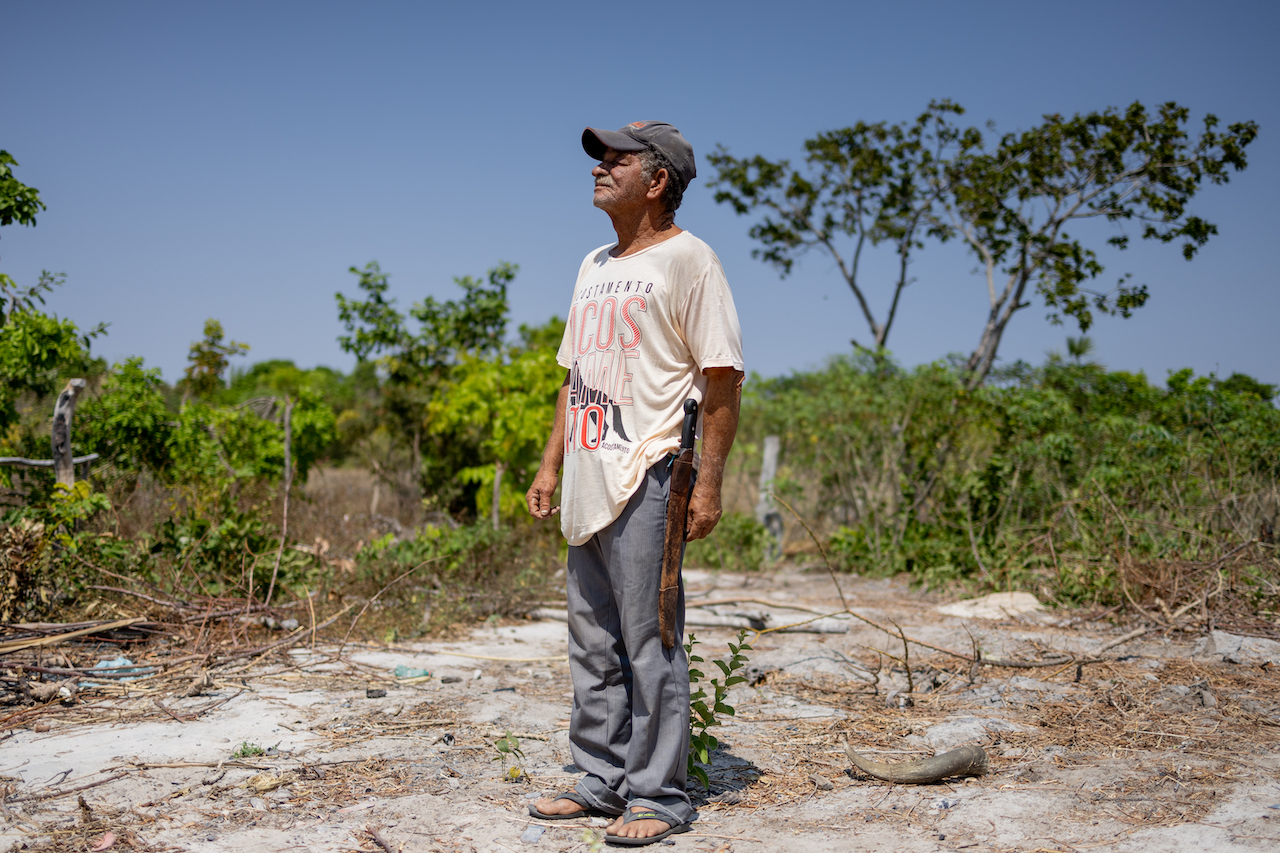
Myke Sena/WWF-Brasil
Nascimento Vieira de Barros in Galho D’água Community
Nacimento has built a happy if simple life for himself on the small plot of land worked previously by his father and grandfather. But in recent years this life has become ever more precarious. “Some people want to invade illegally the lands. There was a man that came here and threatened me twice,” he reports. “I am 64 years old. I was born here. And then there is this guy that comes here and threatens me to take my land.”
Going Down In Flames
The Cerrado is going down in flames. As I arrive in the state of Bahia the forest is on fire, landing on a propeller plane at Barreiras airport, black smoke plumes rise above the nearby forest. It’s a shock to see; and the black smoke feels choking in my throat.
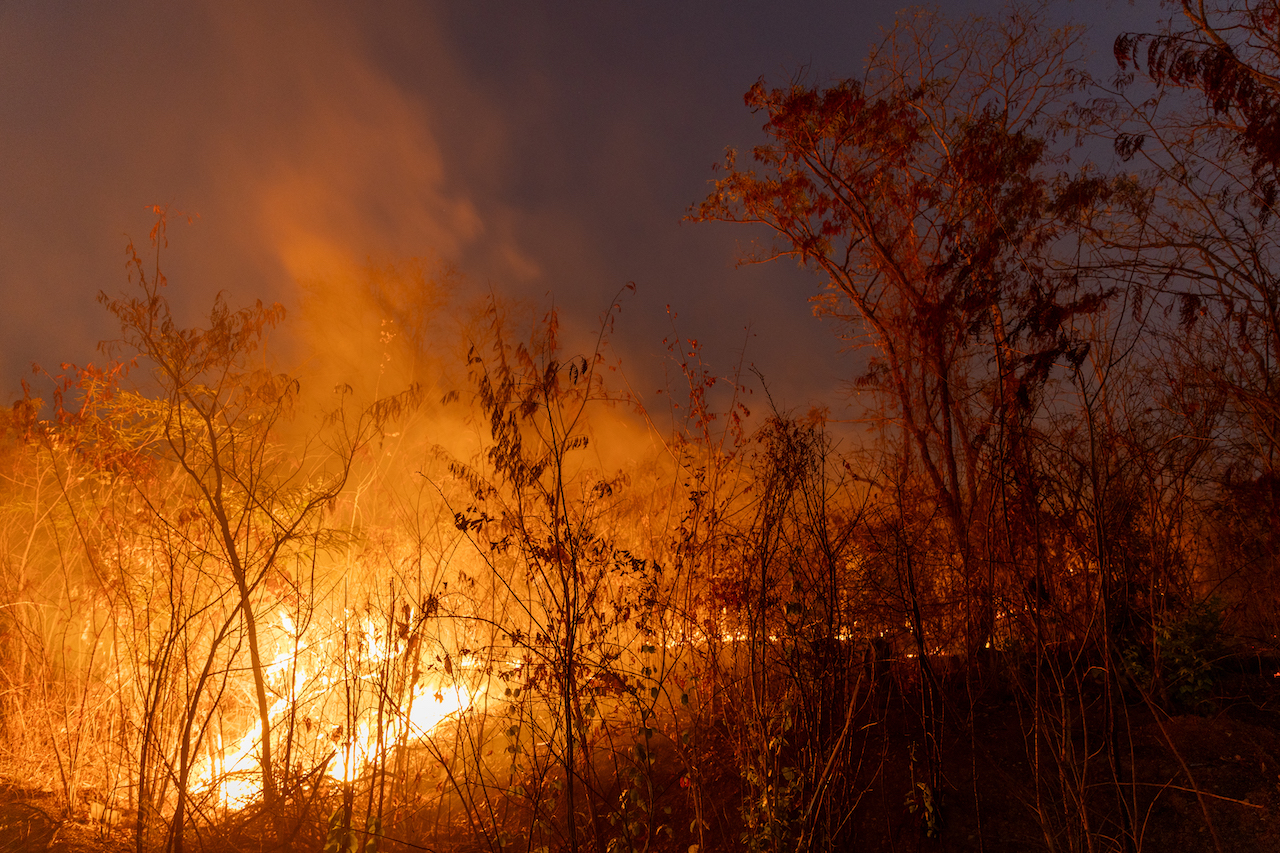
Myke Sena / WWF-Brasil
But over the coming days, the scene plays out again and again, becoming so mundane as to seem unremarkable. This is a daily scene in the Cerrado, where the locals call the plumes “Hiroshimas” as they mushroom up into the cloudless skies like the aftermath of a nuclear explosion.
Fires are a natural phenomenon on the savanna, but they are getting more and more frequent. The Brazilian Institute for Space Research recorded over 23,000 fire outbreaks this year in the savanna, with at least 5,000 square kilometers reduced to ashes. Often the burned savanna is then converted to farmland.
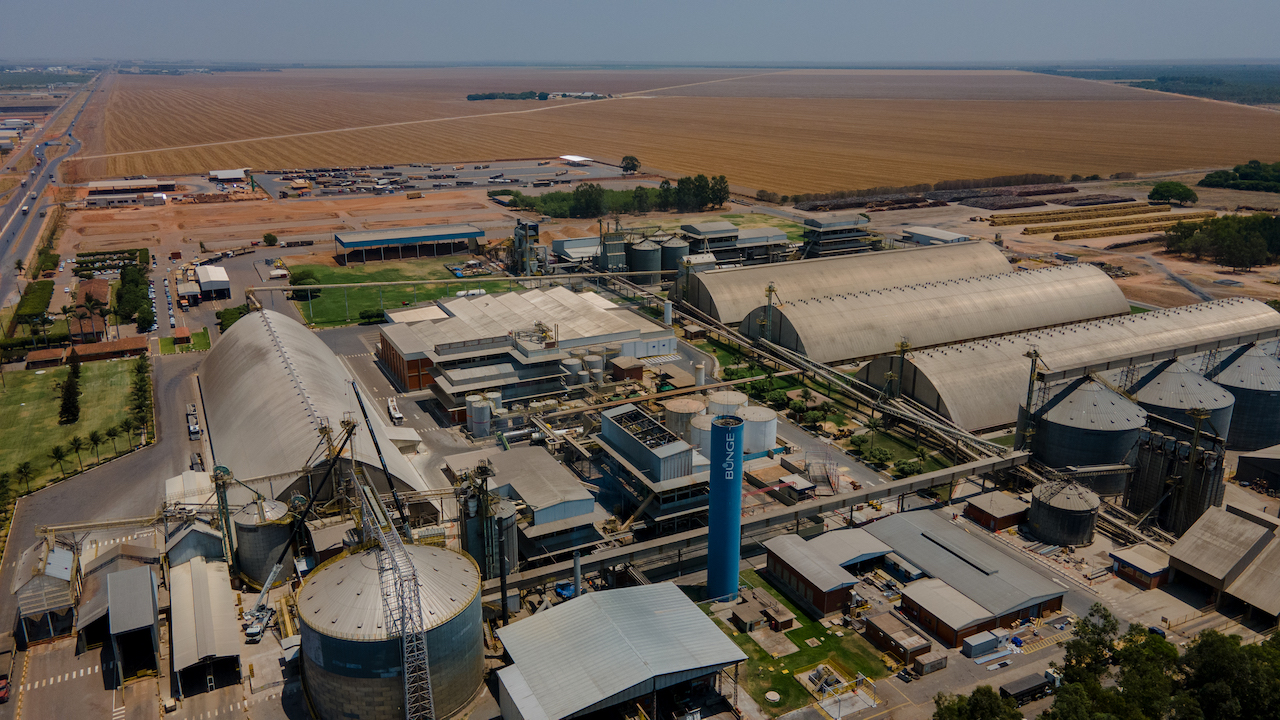
Myke Sena / WWF-Brasil.
Giant Agriindustrial complex in the soy baron town of Luís Eduardo Magalhães
„I feel the clock ticking“
The destruction is dizzying. You fear a tipping-point must be imminent and the whole ecosystem will collapse, with knock-on effects for the Amazon and the rest of the country (and the rest of the world). “I feel the urgency every day,” says the WWF biologist Jean-Francois Timmers, who arrived in the region from Belgium 30 years ago and made it his home. “I feel the clock ticking.”
International education about the beauty, abundance and magnificence of the Cerrado might help protect it. As a small child in primary school I learned about the Amazon. Like millions of others in all corners of the globe, I have been awed by the Brazilian rainforest so that is protection has become an emotional as well as intellectual cause. Maybe the same might work for the Cerrado?
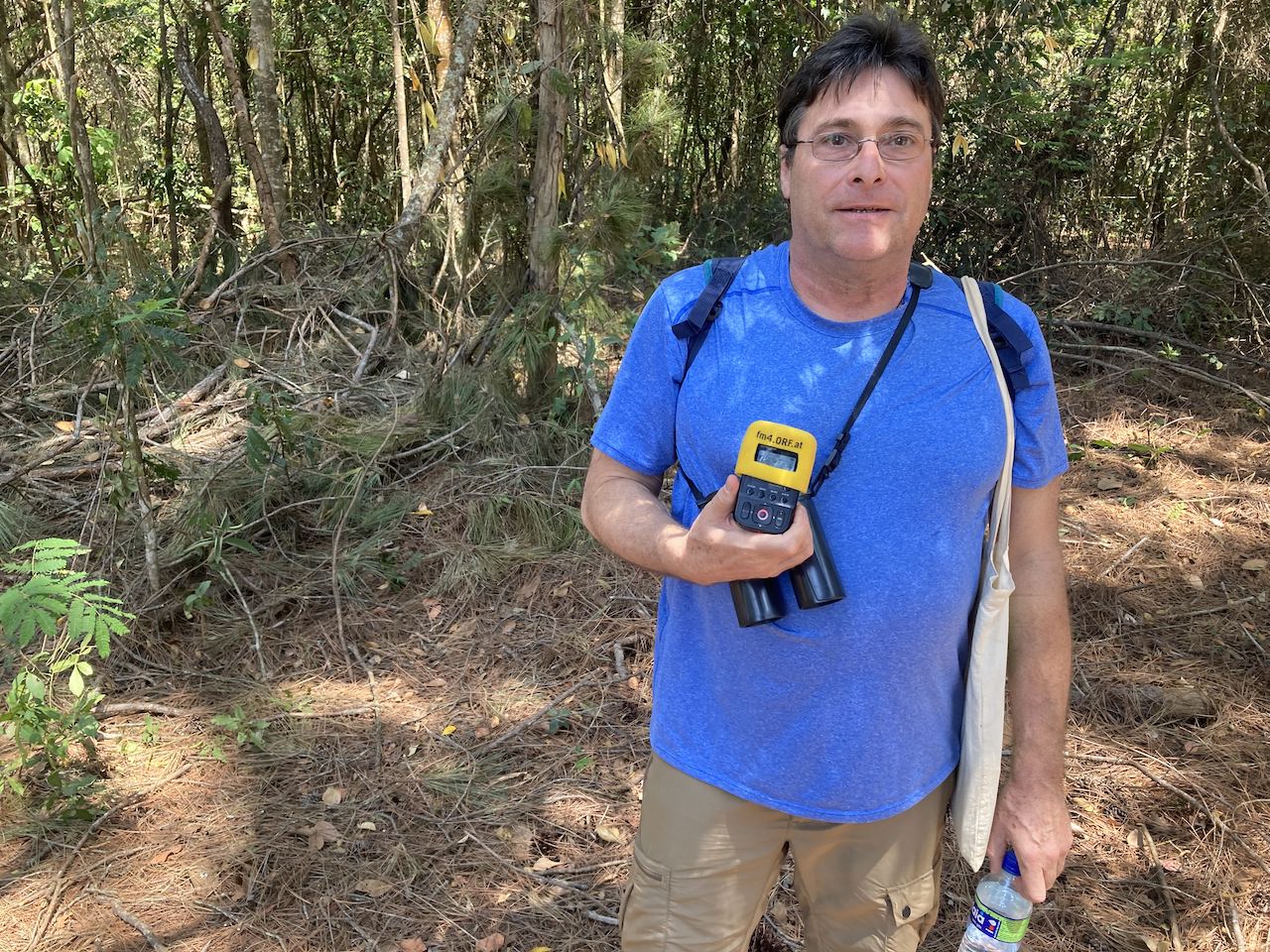
Chris Cummins
Jean-Francois Timmers, WWF
Its charms are subtler but equally powerful, reckons Jean Francois. “When you walk into the Cerrado, you will see all sorts of flowers and a very strange looking vegetation,” he says. “It feels a bit like walking into Jurassic Park because the vegetation is extremely old.”
The World’s Oldest Savanna
Indeed the Cerrado is the world’s oldest savanna, developed over 30 million years. “You will see it kind of vegetation that doesn’t look like anything else on the planet. But you have to look at the details. It’s discreet. It’s kind of a humble ecosystem as compared to the Amazon, but extremely rich.”
It is a wealth that is slipping through our fingers.
All this week, in a special FM4 Morning Show series a special OK FM4 show, I’ll take you on a tour around the Cerrado and look at what, if anything, can save it.
On Wednesday there’ll be a look at the possible solutions in a webstory called „Cerrado: Bringing Back Life“.
Publiziert am 15.10.2023







